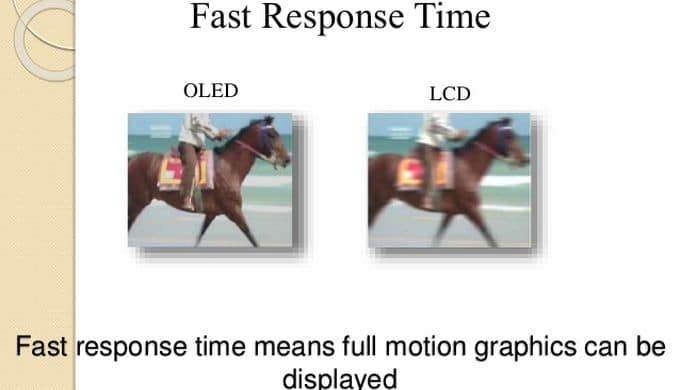In general, the TV response time characterizes the rate of changing transparency in liquid crystal cell-pixel of LCD-screen during the image forming. This characteristic usually has the controversial assessments of experts and users in terms of its importance. Some experts consider it important for LCD TVs. Other experts claim that it does not affect the image quality.
What is important, this value does not correspond to Input Lag, which characterizes the time interval between the arrival of a signal at the input of the device and its display on the screen. The video at the end shows these differences. High Input Lag can significantly interfere in a highly dynamic game.
Of course, additional functions of modern TVs (interpolation of frames, backlighting with dimming, 3D, intelligent functions, etc.) significantly increase its duration. But, unfortunately, companies prefer to advertise a response time that reflects the duration of switching the pixel, for example, from black to white. Additionally, many manufacturers use their own measurement procedure, according to their representations about the parameter essence.
In fact, the image quality is inversely proportional to response time, because its large value leads to blurring of the image. The fast moving subject leaves behind a trail on the screen. This effect is particularly noticeable in sports programs, dynamic scenes or when using a TV as a monitor for games. Today all companies use various technologies to solve this problem.
Slow response significantly worsens viewing. Therefore, some manufacturers can not resist the temptation of artificial decreasing the value of this parameter.
Measure TV response time
The first LCD TVs had the single standard of measurement that was called the “rise-and-fall response” or TrTf (Time rising-Time falling). This parameter characterizes in milliseconds the transition time of liquid crystal from active state (black) to inactive state (white) and back. This methodology uses the 90% of activity black color and 10% of activity white color. VESA, famous developer of standards has taken TrTf as standard for TVs and monitors. But tough directives in this case are absent.
The companies found ways to reduce it artificially. For example, some manufacturers only take into account half the time. This method only reflects the transition of cells from black to white without taking into account the reverse transition, reducing its value by 2 times. Specifying the maximum pixels response speed instead of the average speed is the additional opportunity for manipulation.
GTG method (Gray to Gray) is another method of measuring response time. It measures the time of gradation from one tone of gray to another. The calculation by this technique reaches 0.005 ms for LG OLED TV.
But it’s obvious that these indicators do not correlate with the traditional definition of response time.
Unfortunately, measuring method of this indicator is very rare in the instructions of TVs. TrTf standard today is the most common and is used by almost all large companies.
According to experts, 20-25 Ms is quite enough for comfortable viewing even fast video. Although some users assure that they are able to distinguish the plume on the twelve and even on eight milliseconds. Obviously, it’s an individual characteristic of people visual perception. According to some estimates, the image on the TV screen with 50 Hz is roughly equivalent to 16 milliseconds on LCD.
Conclusion
The response time is a fairly important parameter and can be taken into account when choosing a TV. But today the receiving the reliable information is a problem for the user. However, the VESA has already started to unify on the basis of single TrTf standard. Let us hope that soon it will be adopted everywhere.
